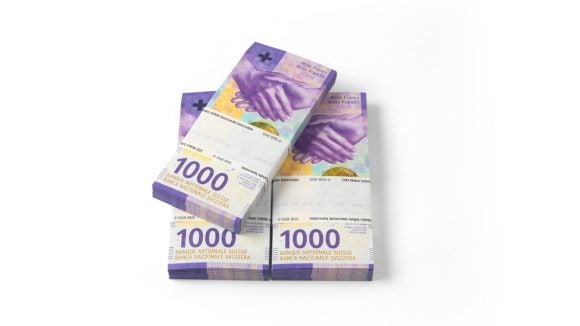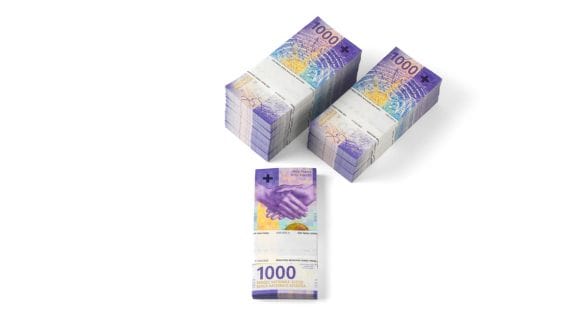We’re here for you
Arrange an appointment for a non-binding consultation or if you have any questions, just give us a call.

![]()
header.search.error
New banknote series
The new 1,000-franc note will go into circulation on 13 March. But that doesn’t mean we will get our hands on one.

“I’ll just have to quickly talk to my boss,” says the waiter of a Zurich restaurant, which is only a few steps away from the Swiss National Bank, when a customer wants to pay with a purple banknote. The customer is in luck: her 1,000-franc note will be accepted.
The woman belongs to a minority. A survey by the Swiss National Bank shows that only 40 percent of the Swiss resident population has held a 1,000-franc note in their fingers at all in the last two years. This is probably due to the fact that large banknotes are rather impractical for the small expenses in everyday life.
The Swiss National Bank has the largest Swiss banknotes printed in the smallest quantities. They nevertheless account for almost 62 percent of the total 72 billion francs of notes in circulation. Many people do not use the 1,000-franc notes for shopping, but hoard them at home or even in a bank vault as a store of value. The lower interest rates become, the sooner this strategy pays off. And as extremely valuable banknotes, the 1,000-franc notes are particularly suitable for this purpose. The 10,000 Brunei dollar bill and 10,000 Singapore dollar note are even more valuable. The latter stopped being printed in 2014, however.
On the other hand, the Hollywood-style notion that a suitcase full of 1,000-franc notes could be used for money laundering is wrong. Firstly, the franc currency area is too small for this, and secondly, the notes are too conspicuous. According to the Federal Office of Police (fedpol), the Money Laundering Reporting Office Switzerland has no indications that the high denominations of cash have been misappropriated for criminal purposes.

What is so special about the new 1,000 note, which will come into circulation on 13 March 2019? Like the other notes in the new banknote series, it has shrunk in comparison to its predecessors and no longer features portraits of brilliant minds. Instead, it puts Switzerland in the best light as far as communication is concerned. The central element is the representation of language. But one thing has remained the same: violet shades continue to dominate as before.
The new “ants” are available not only at bank counters, but also at more and more ATMs. The nickname comes from the penultimate 1,000-franc notes issued by the Swiss National Bank in 1978: they represented the psychiatrist, neurologist and insect expert Auguste Forel. With three different ants on the bank to match.
Is our new banknote series finally complete? No, the banknote that is still missing is the one that is the most widespread and most likely to end up in the restaurant till – the 100-franc note. It will also be issued later this year. And it may even fall into your hands before the new 1,000-franc note.
Since only a few people put the 1,000 notes in their wallets, the notes have an above-average life expectancy of over 10 years. From time to time, however, all banknotes “come home” to the Swiss National Bank. There, the sorting machine subjects them to a rigorous check. Almost a third of banknotes are then destroyed. The figure is currently a little higher – due to the changeover to the new banknote series. At the end of their lifetime, all notes meet the same fate: an integrated shredder cuts them into pieces, presses them and feeds them to the waste incineration plant. Swiss banknotes have about the same calorific value as paper, allowing a total of eight single-family homes to be heated for one year. And that is as ecological as if the notes had been composted instead, argues the Swiss National Bank in its environmental report.
Arrange an appointment for a non-binding consultation or if you have any questions, just give us a call.
Disclaimer